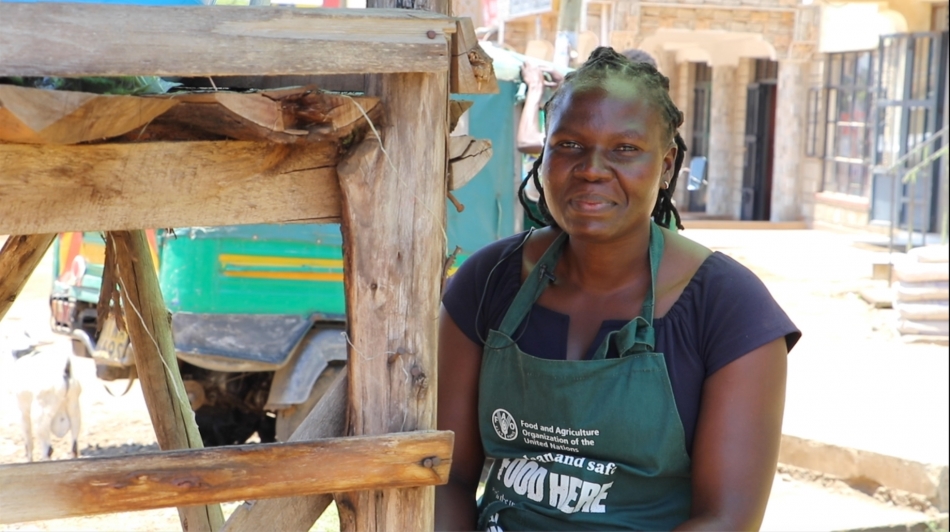Changing the urban landscape. Greening city living.

For most of human history, people around the world lived in small communities. However, over the past few centuries – and particularly in recent decades – there has been a mass migration of populations from rural to urban areas. In fact, in 2007, the number of people in urban areas around the globe overtook the number in rural settings.
While the world’s changing climate is taking a toll on basic city services, infrastructure, livelihoods and health, cities are also a large contributor to climate change. Cities consume almost 80 percent of the total energy produced globally and intake up to 70 percent of the world’s food supply. At the same time, they produce about 70 percent of global waste and emit between 50 and 60 percent of the world’s total greenhouse gases.
The need to drastically improve city living is clear. From curbing food waste to expanding green spaces, the FAO Green Cities Initiative (GCI) is helping urban areas to adopt holistic, sustainable strategies, improving their resilience to shocks and enhancing the wellbeing of their residents.
Launched in 2020, the GCI is linked to FAO’s Urban Food Agenda and works with cities of all sizes, collaborating closely with mayors and local authorities and providing technical guidance and training to improve the urban and peri-urban environment. Through implementing partners and city partnerships, the GCI is working to transform urban food systems and increase green spaces, ensuring that city dwellers have access to affordable, safe and nutritious food from sustainable agrifood systems. After just two years, GCI activities are well underway in close to 100 cities.
Six African cities were the first to embark on the GCI. Here are just three inspiring examples of their success:
Reforesting city mangroves in Quelimane, Mozambique
Working with local communities in Quelimane, an expanding seaport in Mozambique, FAO, with the support of the non-governmental organization Mani Tese and the city council, is reforesting exploited mangroves. With heavier and unpredictable rainfall patterns and marine tides encroaching on coastal cities, the risk of flooding is becoming more prevalent. Mangroves are fundamental to counteract this, as they stem the tide and prevent flooding and soil erosion.
Through an FAO project, local communities have already replanted 1.6 hectares of mangroves. Marcília, a volunteer from the neighbourhood of Icidua, explained how many mangroves had been destroyed over the last years and admitted how unaware people were of their importance.
She described the experience of planting mangroves: “It was very tough, but it was worth it. Eventually the whole community will benefit, and we hope it will help our children,” explained Marcília.
“Similar initiatives should be embraced without hesitation now that the effects of climate change are already being felt,” added the president of the Anaicidua Association, Nené, who was also involved in the project.
Reducing and repurposing food waste in Nairobi, Kenya
In the markets of Nairobi, unsold, spoilt or decaying fruit and vegetables that have not been sold are usually abandoned, polluting the streets and burdening waste collection systems.
Estimates suggest that up to 40 percent of Kenya’s food is lost after it has left the farm and before it is bought by consumers, which in turn contributes to food insecurity.
To address this, FAO’s GCI started working with Kenya’s National Environment Authority to train 100 market operators in waste management, from composting techniques to using biogas digesters to convert food waste into fuel.
"Such innovations should be replicated in other markets", as they have potential to "address multiple urban challenges such as youth unemployment, environmental protection, income generation and social inclusion," remarked Johnson Sakaja, Fourth Governor of Nairobi City County.
Improving the working environment for street vendors in Kisumu, Kenya
Thousands of street vendors across the world earn a basic daily wage selling food at market stalls on roadsides and in marketplaces. With no support system in place, the workers’ income and livelihoods are vulnerable. Poor produce or even bad weather can take a heavy toll on a day’s pay.
Through its Green Cities Initiative and Urban Food Agenda, FAO is supporting women street-food vendors in Kisumu, Kenya with training on hygiene and business management.
“I have learnt that the hygiene and cleanliness of my business is attracting more customers and is an inspiration to other street vendors,” said street-food vendor Gladys Atieno from Kondele.
32-year-old Leah Osabalo who sells vegetables, fruits and cereals described how the FAO training focused on specific aspects of her business, from maintaining a clean and efficiently run stall to keeping records of sales and purchases.
“With this knowledge my sales have increased, and I’ve been able to improve my life and send my children to school,” she explained.
There are many solutions to transforming the world’s expanding cities to become greener and healthier places to live. From improving conditions for street vendors and reforesting areas prone to flooding to finding solutions to managing food waste, the Green Cities Initiative offers every city a chance to empower its citizens, making use of local knowledge and exchanging best practices. If urban living is the way of the future, then we must make that path sustainable.
This story first appeared here
